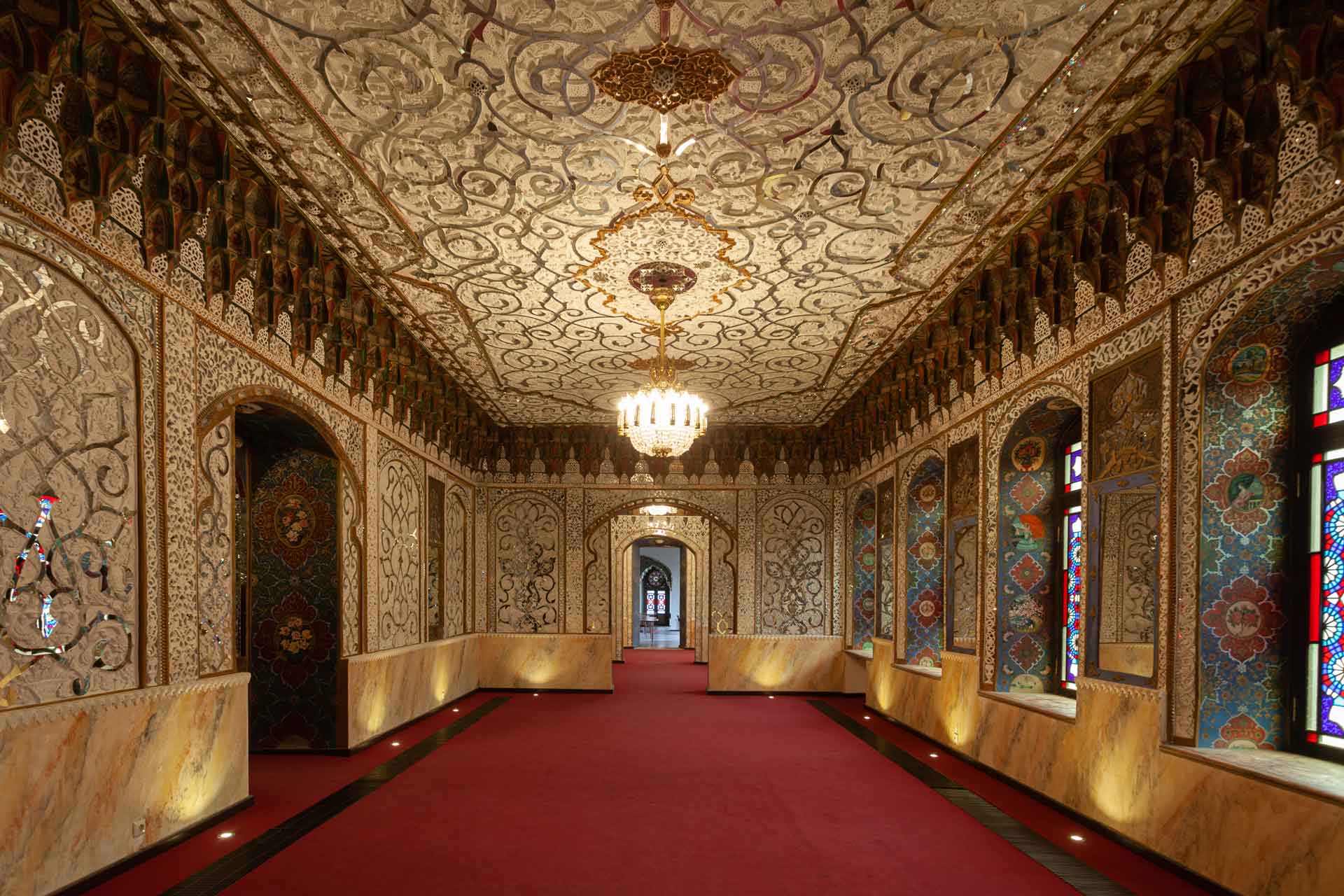SUMMARY
The Tbilisi State Academy of Arts, established on 8 March 1922, is Georgia’s premier institution for higher education in the arts. Situated in a historic building on Griboedov Street in central Tbilisi, the academy offers comprehensive programmes across Fine Arts, Media Arts, Design, Architecture, Restoration/Art History and Theory. Recognised for its rich cultural heritage and commitment to artistic excellence, The Tbilisi State Academy of Arts plays a pivotal role in shaping the artistic landscape of Georgia and the Caucasus region.
HISTORY
The history of the Tbilisi State Academy of Arts is linked to one of the most unique and significant buildings in the capital of Georgia. The story of the building, which was first constructed as a palace and soon after transformed into a cultural center and higher education institute, has a particular significance of its own. It has already functioned as one of the major hubs of arts education in Georgia and the Caucasian region for more than 100 years. The building itself is about 160 years old, and construction of its main section was completed in 1861.
The Academy of Arts is located in the heart of Tbilisi, on a street parallel to Rustaveli Avenue that in 1879 was named after the Russian writer and diplomat Alexander Griboyedov.
During the first half of the 19th century, this district was home to many representatives of Georgian nobility. Being located in one of the most beautiful quarters of the capital, the current Griboyedov street counted among the elite places of residence. In the middle of the 19th century Vardan Arshakuni – a rich merchant, honorary citizen of Tbilisi, and between 1858 and 1860 mayor of the city – selected this location for the construction of his palace. This was the time when Arshakuni’s palace and its church were built based on city architect Grigory Ivanov’s project.
In 1869-86 the palace became home to the so-called Tiflis Circle – a club which united the public servants of the Russian Empire. The building hosted balls, family evenings, dance parties and performances. Different rooms were used as a library, a guest room, a dining room, a billiard hall, a ballroom, and various performance spaces. By the end of the 19th century, the largest section of the palace was owned by Princess Nino Kobulashvili, who commissioned Georgian architect Simon Kldiashvili to reconstruct it.
In 1902, Kldiashvili developed a project of partial rehabilitation, which took into consideration the original design and preserved the main structure and shapes of the façade’s open spaces intact. However, the building still became subject to certain alterations that were made not only to the front but to the interior as well. Some elements of the then very popular Art Nouveau style were added. As a result of this reconstruction, the building was enriched with elements of Classicism, Islam and Baroque, and gained its current appearance.
In 1901, the renewed part of the building was handed over to an art school and afterwards to a newly-launched school of the Caucasus Society for the Encouragement of Fine Arts – a powerful and influential union, which united under its umbrella the associations of Tbilisi artists and local musicians (both established in the 1970s). At the turn of the century, the membership of the union comprised Georgian artists as well as others from different ethnic backgrounds. Naturally and logically, the Georgian Academy of Arts (the initial title of the Academy of Arts) was established on the premises of the Caucasus Society for the Encouragement of Fine Arts and the art school before the tenure of the entire building was transferred to the Academy.
At this time the multifunctional art space was administered by artists from multiethnic backgrounds. It is noteworthy that starting from 1909, before the official establishment of the Academy, the building also hosted the Higher Courses of Tbilisi Women – a private school initiated by a women’s group. One of the halls was occupied by renowned artist and professor of the Academy Gigo Gabashvili, who used it as a workshop for many years and where he even organized his personal exhibitions. During 1922-1937 another founder of the Academy of Arts, the Polish painter Henryk Hryniewski lived in the same building, and in 1916 his wife Maria Perini opened a popular ballet studio here.
At the beginning of the 20th century, there were several art schools operating in Tbilisi and other cities of Georgia. At the end of 1921 they were replaced by workshops of higher art, since Georgian society deemed it very important to establish a higher education institution in the field of arts. Dimitri Shevardnadze, the artist and public figure who returned to Tbilisi from Munich in 1916 and established the Society of Georgian Artists, contributed significantly to turning this idea into reality.

The Academy of Arts opened its doors in spring of 1922 as the first higher education institution in the entire Caucasus region, and one of only three academies in the Soviet Union. The Tbilisi Academy of Arts was managed by a council of professors: G. Gabashvili, I. Nikoladze, E. Lanceray, M. Toidze, J. Charlemagne, E. Tatevossian, H. Hryniewski, A. Kalgin, N. Severov, G. Chubinashvili – the famous art historian, who was elected as first rector of the Academy. Over the following years the teaching team of the Academy was joined by modernist artists David Kakabadze and Lado Gudiashvili. Theoretical disciplines were taught by the famous scientists Dimitri Uznadze, Vakhtang Kotetishvili, Shalva Nutsubidze among others.
Throughout the Soviet era, the academy continued to evolve, expanding its academic offerings and facilities. In 1972, a new ten-floor academy block was constructed, and in 2005–2006, the new block was restored by Cartu Bank. Today, the Tbilisi State Academy of Arts stands as a testament to Georgia’s rich artistic heritage and continues to be a leading institution for art education in the region.
VISION
The founder’s vision for the Tbilisi State Academy of Arts was to create an institution that would foster the development of the fine arts in Georgia and the Caucasus region. By establishing a formal academy, the aim was to provide structured education and training for aspiring artists, thereby elevating the artistic standards of the region. The academy was envisioned as a centre of excellence where students could engage with both traditional Georgian artistic practices and contemporary artistic movements.
This dual focus was intended to cultivate a generation of artists who could contribute to the cultural richness of Georgia while also engaging with global artistic trends. Further, the academy was established as a hub for artistic collaboration and innovation, bringing together artists, educators, and art enthusiasts to exchange ideas and inspire creativity. This collaborative environment was seen as essential for the growth and evolution of the arts in the region.
JOB INTEGRATION RATE
The Tbilisi State Academy of Arts has a strong track record of integrating its graduates into the professional art world. Many alumni have gone on to become prominent artists, curators, and educators, contributing significantly to the cultural landscape of Georgia and beyond. The academy’s comprehensive curriculum, which combines theoretical knowledge with practical skills, equips students with the necessary tools to succeed in various art-related professions. Additionally, the academy’s active involvement in international collaborations and partnerships provides students with opportunities to gain global exposure and experience.
KEY TEAM
Rector: Karaman Kutateladze
Dean of Fine Arts: Megi Tsitlidze
Dean of Media Arts: Nana Iashvili
Dean of Design: Giorgi Iashvili
Dean of Architecture: Irakli Pirmisashvili
Dean of Restoration, Art History, and Theory: Tamara Khundadze
TOP COURSES
The Painting programme at The Tbilisi State Academy of Arts has been an enduring presence, embodying a fusion of traditional and contemporary artistic practices. It offers students a comprehensive education in various painting techniques and styles, preparing them for careers in fine arts. The Digital Media programme focuses on the development of sector-specific and general competencies, combining theoretical knowledge with practical skills to ensure graduates’ employment in the evolving field of media arts. And the Ceramic Arts programme offers students the opportunity to explore the art of ceramics, providing them with the skills and knowledge necessary to create functional and artistic ceramic pieces.


